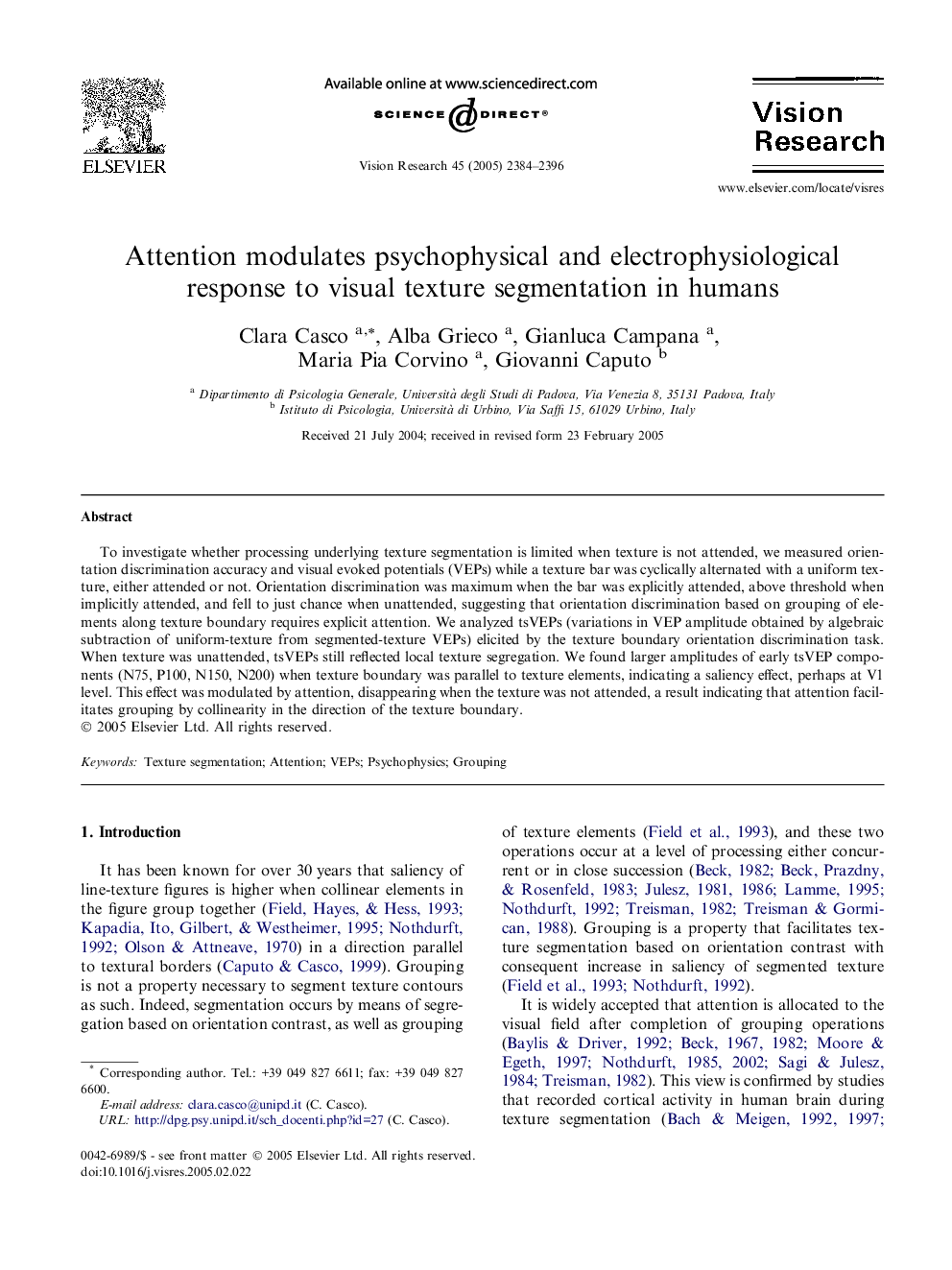| Article ID | Journal | Published Year | Pages | File Type |
|---|---|---|---|---|
| 4036775 | Vision Research | 2005 | 13 Pages |
To investigate whether processing underlying texture segmentation is limited when texture is not attended, we measured orientation discrimination accuracy and visual evoked potentials (VEPs) while a texture bar was cyclically alternated with a uniform texture, either attended or not. Orientation discrimination was maximum when the bar was explicitly attended, above threshold when implicitly attended, and fell to just chance when unattended, suggesting that orientation discrimination based on grouping of elements along texture boundary requires explicit attention. We analyzed tsVEPs (variations in VEP amplitude obtained by algebraic subtraction of uniform-texture from segmented-texture VEPs) elicited by the texture boundary orientation discrimination task. When texture was unattended, tsVEPs still reflected local texture segregation. We found larger amplitudes of early tsVEP components (N75, P100, N150, N200) when texture boundary was parallel to texture elements, indicating a saliency effect, perhaps at V1 level. This effect was modulated by attention, disappearing when the texture was not attended, a result indicating that attention facilitates grouping by collinearity in the direction of the texture boundary.
